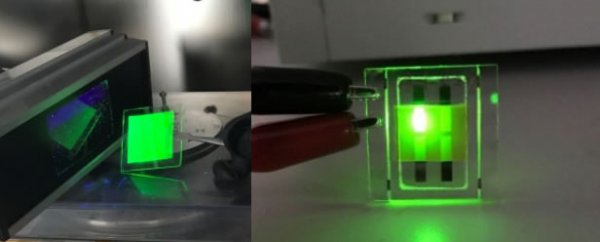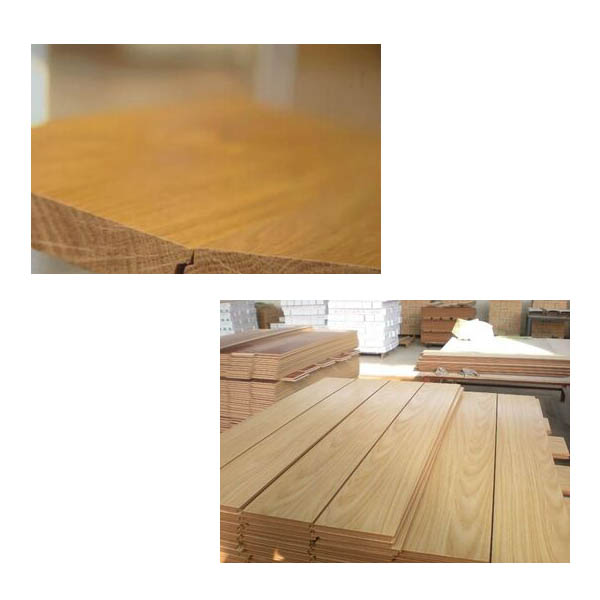An international research team led by Qin Chuanjiang, a researcher at the Changchun Institute of Applied Chemistry, Chinese Academy of Sciences, and Professor Anda Chiba, a professor at Kyushu University in Japan, revealed the mechanism that led to a class of quasi-two-dimensional perovskite with low luminous efficiency, and then proposed a solution. High-efficiency green light-emitting diodes of similar materials. Related results were published online in Nature Photonics (Nature Photonics (2019)) on November 12.
Organic-inorganic hybrid perovskites have attracted extensive attention in the field of optoelectronic research due to their low cost, ease of processing, and excellent optoelectronic properties. Light-emitting diodes based on such materials also have great potential to become the next generation of lighting and display components. Among them, three-dimensional perovskite is formed by alternating combination of organic and inorganic components in three-dimensional space, two-dimensional perovskite is a lamellar structure formed by alternating two components, and quasi-two-dimensional perovskite is two types The mixed structure of perovskite, that is, a three-dimensional perovskite of different sizes is surrounded by a large-sized organic shell layer. Since the quasi-two-dimensional perovskite has a naturally-formed quantum well structure, it has a larger exciton binding energy than the traditional three-dimensional perovskite, which is more conducive to luminescence. Although some quasi-two-dimensional perovskite light-emitting diodes have achieved higher electro-optical conversion efficiency, when using different organic components, the reason for the low efficiency of some green light devices is still unknown. In this research work, a large number of relevant experimental data obtained by the researchers through international cooperation answered this question. Qin Chuanjiang, the first author and co-correspondent of the paper, said: "At present, most researchers believe that this type of perovskite shows more characteristics of traditional inorganic semiconductors. However, we have proved that quasi-two-dimensional perovskites have many properties of organic semiconductors. , So exciton behavior with different energies needs to be considered. "
Unlike typical inorganic semiconductors, organic semiconductors first form exciton states during electroluminescence and then relax to emit light. Due to the spin characteristics of electrons, two different properties of singlet and triplet excitons will be formed. Although the regulation of singlet and triplet excitons is the basis for the design and development of high-efficiency organic light-emitting diodes, it has not been considered in the study of perovskite light-emitting diodes. In this study, the researchers compared two types of perovskite luminescent materials with similar crystal properties but containing different organic components, and found that the triplet excitons in one type of perovskite materials disappeared. Through analysis, organic components with low triplet energy levels are used in this type of perovskite. The reason for its poor luminescent performance should be the transfer of triplet excitons to the organic part with lower energy, resulting in non-radiative energy loss. When an organic component with a high triplet energy level is used, the triplet excitons will remain in the perovskite luminescence host, thereby obtaining high luminescence efficiency. In addition, the researchers further found that in specific quasi-two-dimensional perovskites, the dark triplet excitons can also be converted into radiant singlet excitons, making all the excitons in the quasi two-dimensional perovskite device. Make it possible.
Based on the above findings, the research team prepared a quasi-two-dimensional perovskite light-emitting diode capable of efficiently capturing triplet excitons by selecting an appropriate organic component, and obtained an electro-optic conversion efficiency of 12.4%. "We not only explained the experimental phenomena observed before, but some new discoveries also provided guidance for the development of high-efficiency perovskite optoelectronic devices, such as light-emitting diodes, lasers, and solar cells." Said Anda Chiba, who led the research.
The above research work was supported by the start-up funds for the introduction of overseas talents from Changchun Yinghua Institute.

Left: Perovskite film that emits strong light under ultraviolet light; Right: Perovskite device that emits light in the bias test
Many different species of wood are fabricated into Wood Flooring in two primary forms: plank and parquet. Hardwoods are typically much more durable than softwoods. Reclaimed lumber has a unique appearance and is used in green building. Engineered hardwood has a thin solid wood layer on top with a composite core. It can be a less expensive option than buying hardwood.
Luli Group Co., Ltd, the company goal is to provide high-quality Flooring and environmentally-friendly products. We also use OSB because of its limited consumption of forest greenery.
Wood flooring we have:
1. Solid wood flooring:
Material: Poplar, eucalyptus, red oak, sapele, bintangor, rosewood, Bramante, teak, ribbed birch, black walnut, oak
Size: 910x122x18mm, 910x123x18mm, 910x127x18mm
Face: Uv lacquer
2. Laminate OSB flooring:
Material: OSB
Size: 910x122x18mm, 910x123x18mm, 910x127x18mm
Face/Back: Melamine paper with wear-resisting layer
Surface type: Soft finish, glossy finish, matte finish and so on
Glue: MDI( Zero Formaldehyde)

Flooring
Wood Flooring,Waterproof Flooring,Plank Flooring,Vinyl Flooring
Luli Group Co.,Ltd. , https://www.plywoods.nl
